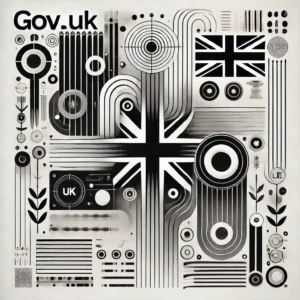Introduction
Today, we’re diving into the intriguing world of digital design, where words are not just words; they’re the building blocks of user experience -and our human experience in general-. The significance of words transcends their basic role as mere vehicles of communication, acting instead as vital conduits to understanding culture, identity, and human interaction. Words serve as cultural mirrors, reflecting the values and histories of societies, as eloquently noted by linguistic anthropologist Edward Sapir, who described language as a temple enshrining the soul of its speakers.
In anthropology, studying words is not merely about examining communication methods; it’s about delving into the intricate tapestry of human culture, uncovering how we construct our realities, forge connections, and define our identities through the nuanced power of language. Thus, I have always been mesmerized by the differences between copywriting and UX writing.
The Essence of Copywriting
Copywriting, in its most radiant form, is the art of persuasion through words. Think of it as the charming friend at a party who can talk about his/her new treat in such an irresistible way that you can’t help but want it too. It’s about creating a narrative that resonates with the audience’s desires, aspirations, and occasionally, their fears.
Key Points of Copywriting:
- Emotional Appeal: Copywriters are like emotional chefs, mixing a concoction of words that tap into the heart and soul of the reader.
- Brand Voice: They’re the guardians of the brand’s voice, ensuring consistency and personality across all content.
- Conversion-Focused: The end goal? Action. Whether it’s a purchase, a subscription, or a social media share, copywriting is all about driving results.
The Art of UX Writing:
UX writing, on the other hand, is a more subtle craft. It’s the guiding hand in the user’s journey through a digital product. Imagine it as a friendly tour guide in an unfamiliar city, offering clear, concise directions and reassurances. UX writing is about creating a seamless, intuitive, and enjoyable experience for the user.
Key Points of UX Writing:
- User-Centered: It’s all about the user. Every word is crafted with the user’s needs, emotions, and context in mind.
- Clarity and Simplicity: UX writing strips away the fluff. It’s clear, direct, and easy to understand, even at a glance.
- Consistency and Guidance: This form of writing ensures consistency in terminology and provides clear guidance, helping users navigate and interact with a product effortlessly.
The Intersection and Differences
While both copywriting and UX writing are integral to digital design, they serve different purposes. Copywriting is the voice of the brand, while UX writing is the voice of the product. Copywriting aims to attract and persuade, whereas UX writing aims to assist and guide. However, the intersection of these two worlds is where the magic happens. When they work in harmony, they create digital experiences that are not only functional but also emotionally resonant.
As we blend the persuasive power of copywriting with the user-centric approach of UX writing, we pave the way for digital products that are not just usable but also delightful. So, whether you’re a wordsmith or a design aficionado, remember: every word counts in the journey of crafting exceptional digital experiences.
Now, go forth and weave words that don’t just tell a story but also create unforgettable user journeys. Happy writing!







